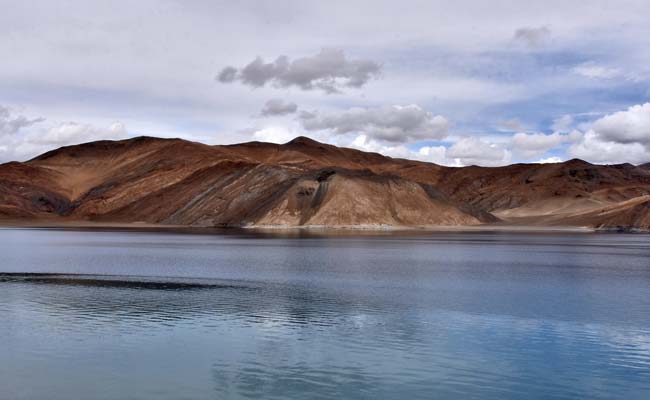
The firing took place on the north bank of Pangong Lake in early September, sources say.
Indian and Chinese soldiers fired 100-200 rounds of "warning shots" on the North Bank of Pangong Lake in early September, sources say. The incident, say sources, took place when Indian soldiers made key moves to establish a post overlooking Chinese soldiers.
The confrontation also took place days before External Affairs Minister S Jaishankar and his Chinese counterpart Wang Yi met in Moscow on September 10 and agreed to defuse tensions at the Line of Actual Control (LAC) in Ladakh.
Both sides put out a joint statement on a five-point plan to "continue their dialogue, quickly disengage, maintain proper distance, ease tensions and work towards new confidence-building measures".
In another incident reported last week, China tried to approach Indian positions on the South Bank of Ladakh's Pangong Lake and fired shots in the air. Chinese soldiers armed with spears and rifles allegedly tried to force a medieval-style fight similar to the June 14 clash at Galwan Valley, in which 20 Indian soldiers died for the country. In the confrontation, shots were fired for the first time along the LAC in 45 years. Both sides accused each other of firing in the air.
Indian troops recently gained tactical advantage by occupying heights in the region, thwarting Chinese attempts to unilaterally alter the LAC. Sources say the Indian Army continues to hold ground after many provocations by the Chinese army in their attempt to move in on these heights.
Satellite imagery of the Pangong Lake region from last week shows Chinese construction activity in the North Bank and creation of new Chinese posts near the LAC in the South Bank.
Sources say India currently occupies the heights near Finger 3-4 at Pangong.
There are eight spurs of the Chang Chenmo range, which lie on the North Bank of Pangong Lake. Each spur, which has the physical appearance of a finger, is identified by both Indian and Chinese forces by a particular number. There are eight 'fingers' on the North Bank. India used to patrol to Finger 8, where it believes the LAC lies. China has physically prevented India from patrolling beyond Finger 4 from May this year, forcibly creating a "new LAC" at Finger 4. To dominate the "Fingers," each side has set up high altitude posts since posts located higher have a tremendous advantage in mountain warfare since enemy positions can be sighted better.




